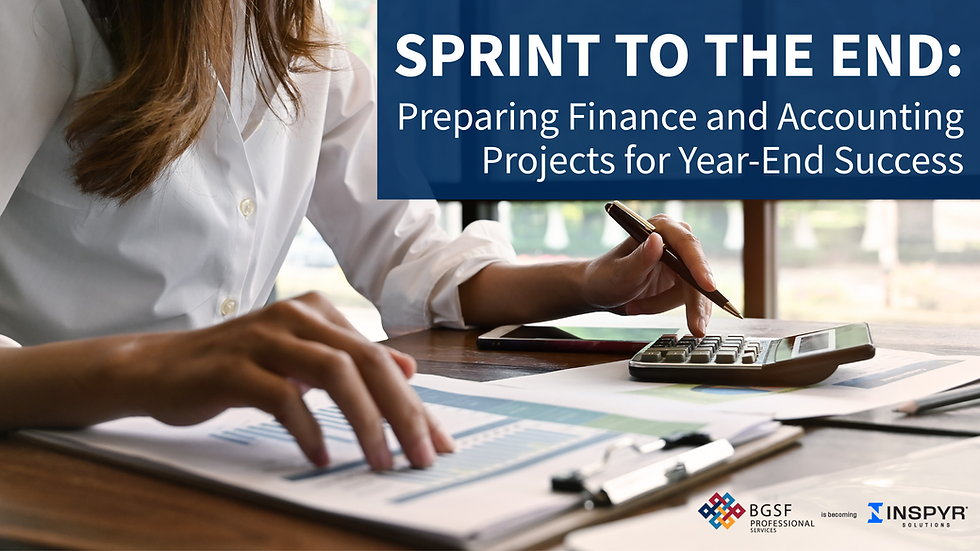Workday 2025R2: What You Need to Know About the Fall Release
- bberrodin
- Sep 22
- 3 min read

Workday 2025R2 includes a broad set of enhancements spanning Financials, HCM, Payroll, Reporting, Integrations, Adaptive Planning, and user experience. The focus is on improving efficiency, giving more flexibility to administrators and users, embedding more intelligence (AI/ML), and streamlining navigation. Here are some of the more noteworthy changes.
What’s New & What’s Improved in Workday2025R2
Financials & Payments
Bank Routing Codes for Supplier Invoices & Miscellaneous Payment Requests: At transaction entry, you can now select the bank account via routing codes, reducing downstream corrections.
Intercompany Multicurrency Netting: Enables direct payment of intercompany invoices in multiple currencies, helping to manage FX exposure and streamline cross-company accounting.
Multicurrency Support for Company Bank Accounts: Ability to set up bank accounts in different currencies, link them via saved related accounts, etc. Helps reduce foreign exchange overhead and simplifies payments.
HCM / HR-Admin Enhancements
HCM Admin Hub: A central place for setup/configuration tasks for Core HCM, Recruiting, Benefits, Time Tracking, Scheduling, etc. Improves discoverability of tools.
Job Architecture Hub: Centralized space for job architecture data and tasks (profile analytics, identifying gaps, consistency checks). Especially helpful for organizations evolving their job profile frameworks.
Payroll & Time / Absence
Shared Recoup Arrears Limit: A cap on how much arrears can be recouped from employee pay (deductions). Useful for regulatory compliance in certain jurisdictions.
Payroll Input Custom Validations: More control/validation over payroll inputs to reduce errors; e.g., adjusting how scheduled hours display and allowing certain edits.
Calculated Time Offs Crossing Midnight: Time off requests that span midnight are now handled more consistently, aligning with time blocks.
Absence Calendar Improvements: Employees can submit multiple time-off entries on the same day in one request.
Reporting, Analytics & AI
Machine Learning for Job Profiles: When creating or editing job profiles, Workday will suggest potential duplicates or similar profiles using ML over existing job architecture.
Generative AI for Feedback (SBI Framework): Helps employees/managers write feedback using the Situation-Behavior-Impact format, making feedback more structured and actionable.
Quick Actions on Home, Configurable Navigation / Hubs: Users can configure up to 10 custom shortcuts (reports, tasks, links), better navigation, and a cleaner layout.
Adaptive Planning & Integrations
Enhancements to Adaptive Planning tools: more efficiency, smarter tools for forecasting, and planning across functions.
Upgraded/Expanded benefit connectors, APIs, improved field-attributes in integrations for payroll, compensation, etc.
Usability & UX
Global navigation sidebar improvements, context save for favorites, and other navigation usability updates.
Mobile enhancements and leaner UI elements to reduce clutter & improve speed.
Things to Watch
Some features are opt-in vs automatically available, so admin teams need to know what to enable.
Retirements or deprecations may affect custom integrations or older workflows; review the release notes carefully.
Why It Matters
Efficiency gains: Less manual work, fewer corrections, faster processing for finance, payroll, and HR.
Better compliance & controls: E.g., caps on recouping arrears, validations, better audit trail.
Improved user experience & adoption: Cleaner navigation, custom shortcuts, and central hubs reduce friction and improve discoverability.
Intelligence built-in: AI/ML features can help reduce duplication, improve skill data, and improve feedback quality—all valuable for growing enterprises.
Final Thoughts
Workday 2025 R2 is a substantial release. For organizations that plan ahead and align internal teams, there’s a strong opportunity to streamline operations, strengthen controls, and improve the user experience. But the key is preparation, knowing what features align with your needs, testing thoroughly, and managing change well.



Comments